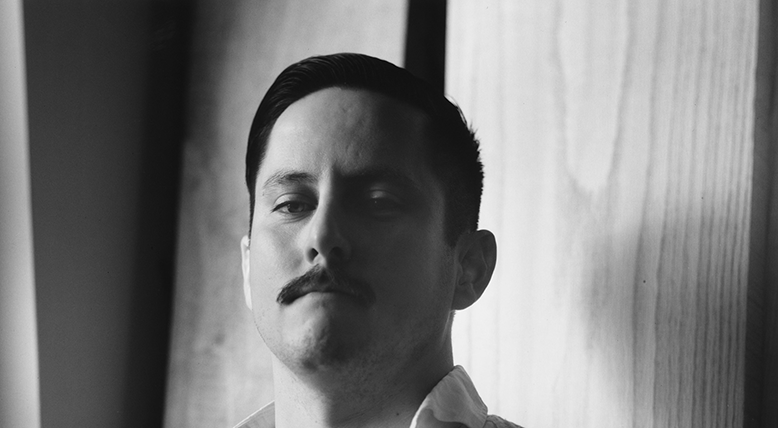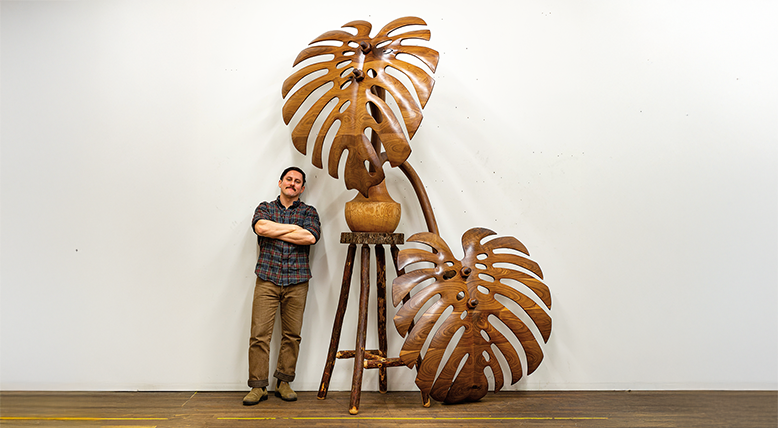At the height of his career, Swiss sculptor Alberto Giacometti famously said, “The object of art is not to reproduce reality, but to create a reality of the same intensity.” It’s fair to assume that the mid-century master would have been pleased by the work of these three contemporary artists, all of whom work in craft mediums and whose pieces seem to emerge from another dimension—a droll, mysterious, and kaleidoscopic place. Using materials that range from felted wool to clay to mother-of-pearl, Liam Lee, Ariana Heinzman, and Sasha Koozel Reibstein share a searching mindset that leads them to create a kind of exalted three-dimensionality. The objects they make—some completely abstract, others more recognizable—look like they could come alive at any moment.
Vivacious
Three contemporary artists use imaginative techniques and materials to create furniture, tapestries, and sculpture exploding with life.
by Paola Singer
February 14, 2025

Liam Lee’s vivid wool and mohair tapestry It’s Not Easy, 2023, 88.75 x 90.75 in., appears on the cover of the Spring 2025 issue of American Craft
“People should live with more color.”
— Liam Lee
Liam Lee
Liam Lee began tinkering with wool fiber during his days off from working for Mary Howard, one of the most in-demand set designers in the fashion world. “I felt I couldn’t express myself creatively outside of work,” says the Manhattan-born maker. “I thought of ceramics, but wool was a more easily contained mess; I could work on it inside my apartment, dye it in my kitchen and such.”
Lee’s early creations were flat-felted tapestries. He quickly realized that needle felting was an additive process that allowed him to layer volume in multiple ways. Inspired by microscopic organisms, topographic maps, and star charts, his tapestries became intricately textured abstract compositions. “There’s an ambiguity to what you are seeing,” Lee says of the panels, rife with touchable bumps and flowing ribbons. “I collapse all these ideas into each other, like a microcosm of a universe.”
When the pandemic arrived, about two years into his experiments with felting, Lee used the enforced isolation to see how far he could push his craft in size and form. The tapestries, made of merino wool needled onto mohair panels, got larger and bolder, and were soon picked up by the shop at the Noguchi Museum in Queens. And he began sculpting furniture, mostly stools and chairs whose poplar plywood frames are enveloped in wildly voluminous, intensely hued felt.
Lee’s finished furniture is composed of hundreds of felted parts that he carefully grafts together using a needle, making it look completely seamless. He says his riotous use of color is informed by an aversion to “chromophobia,” or the trend in contemporary design to make everything “beigy.” Using acid dyes, he adds color to raw unspun merino wool from North Carolina, and keeps reams of variously hued wool in his Brooklyn home and studio, so he can then mix and match as he’s working. “My approach is very intuitive. I’m not consciously using color theory,” he says. “People should live with more color.”
One of Lee’s pieces, Chair 11, which has a bright-green back that looks like a stalk of broccoli rabe and a deep-purple seat that resembles a jumble of innards, was a finalist for the Loewe Foundation Craft Prize. “I draw a lot of inspiration from plant life,” he says. “I tend to compare my work to gardening: If you prune a plant here and there, over time it grows into its final form, and similarly there’s a negotiation between my own hand and the pieces.”
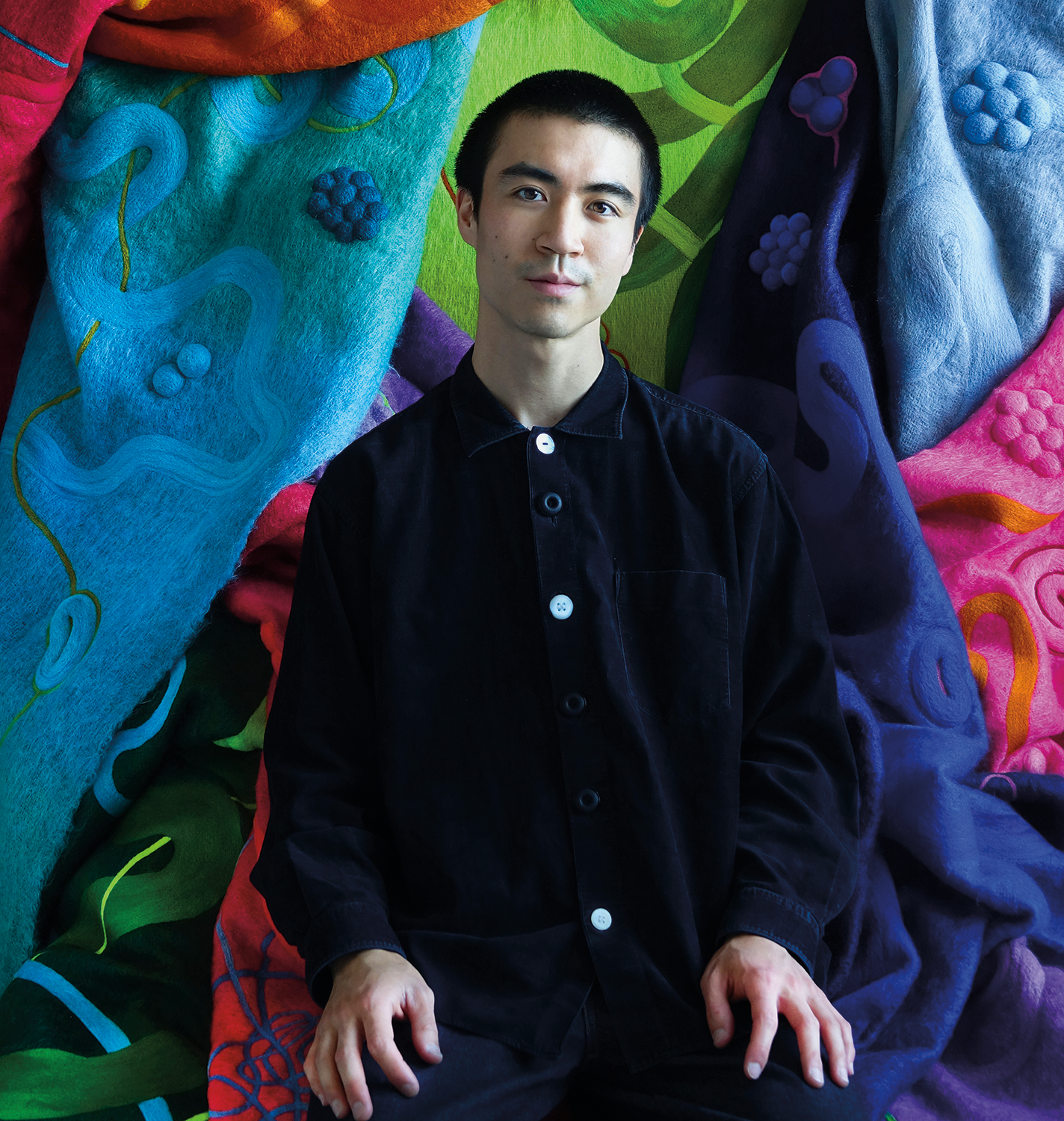
Lee with his felted tapestries.
-
 Photo courtesy of Studio Liam Lee
Photo courtesy of Studio Liam LeeLee grafted felted wool onto a poplar plywood chair to create Chair 11, 2023, 41.75 x 21.25 x 23 in.
-
 Photo courtesy of Studio Liam Lee
Photo courtesy of Studio Liam LeeDetail of Liam Lee’s vivid wool and mohair tapestry It’s Not Easy, 2023, 88.75 x 90.75 in.
“It’s a little cartoonish and other-realm-y.”
— Ariana Heinzman
Ariana Heinzman
Ceramist Ariana Heinzman lives mostly off the grid on a small farm on Vashon Island in Washington state. It seems appropriate, then, that her painted vases, vessels, and sculptures depict elements of the natural world, including leaves, petals, and fruit peels. Heinzman’s thought process is not as simplistic or linear as that, though. “We made nature fit into our lives instead of vice versa, turning plants into decorative objects,” she says. “I think of that as absurd, yet I’m not being judgmental about it—I work in a playful headspace.” Toying around with the notion that humans have appropriated nature, and imagining that plants might do the same to humans, she makes pieces such as Bust in Red Dahlia, a clay sculpture shaped like a classic bust, with a rounded open flower in place of the face and leaves as shoulders.
Heinzman attended the Rhode Island School of Design to become an illustrator—from a young age she had admired the work of Dr. Seuss, Shel Silverstein, and Maurice Sendak—but the moment she touched clay during a class, she was hooked. “It captures your touch so instantly; you can identify an artist by the way they’re touching the clay, similar to how you draw a line,” she says. These days, after a few twists and turns, she is able to combine both of her artistic passions, adding hand-drawn lines to her ceramics.
Heinzman starts by extruding long strings of clay, about an inch thick, that she then drapes or coils into the desired shape, using her hands to build and smooth out the sculpture. The clay she uses has a high fiber content, which she says makes it hold its shape better and crack less while drying. After a first firing, the next step is an underglaze, a pigmented liquid clay. This is where the strong but notoriously matte colors of her pieces come from. “I love this process,” she says. “I add lots of coats—by hand and with brushes—so the color is really vibrant, going from lightest to darkest.”
Some of Heinzman’s bigger, bolder works were on view last August at her first solo show, Habitat for a Fake Plant at J. Rinehart Gallery in Seattle. Banana Split Plant, a 29-inch piece exhibited on a stool of similar height, consists of flared banana peels, standing upright, seemingly about to spring into action and walk away. “It’s a little cartoonish and other-realm-y,” says the artist. “The whole show was about plants getting human characteristics.”
arianaheinzman.com | @arianaheinzman
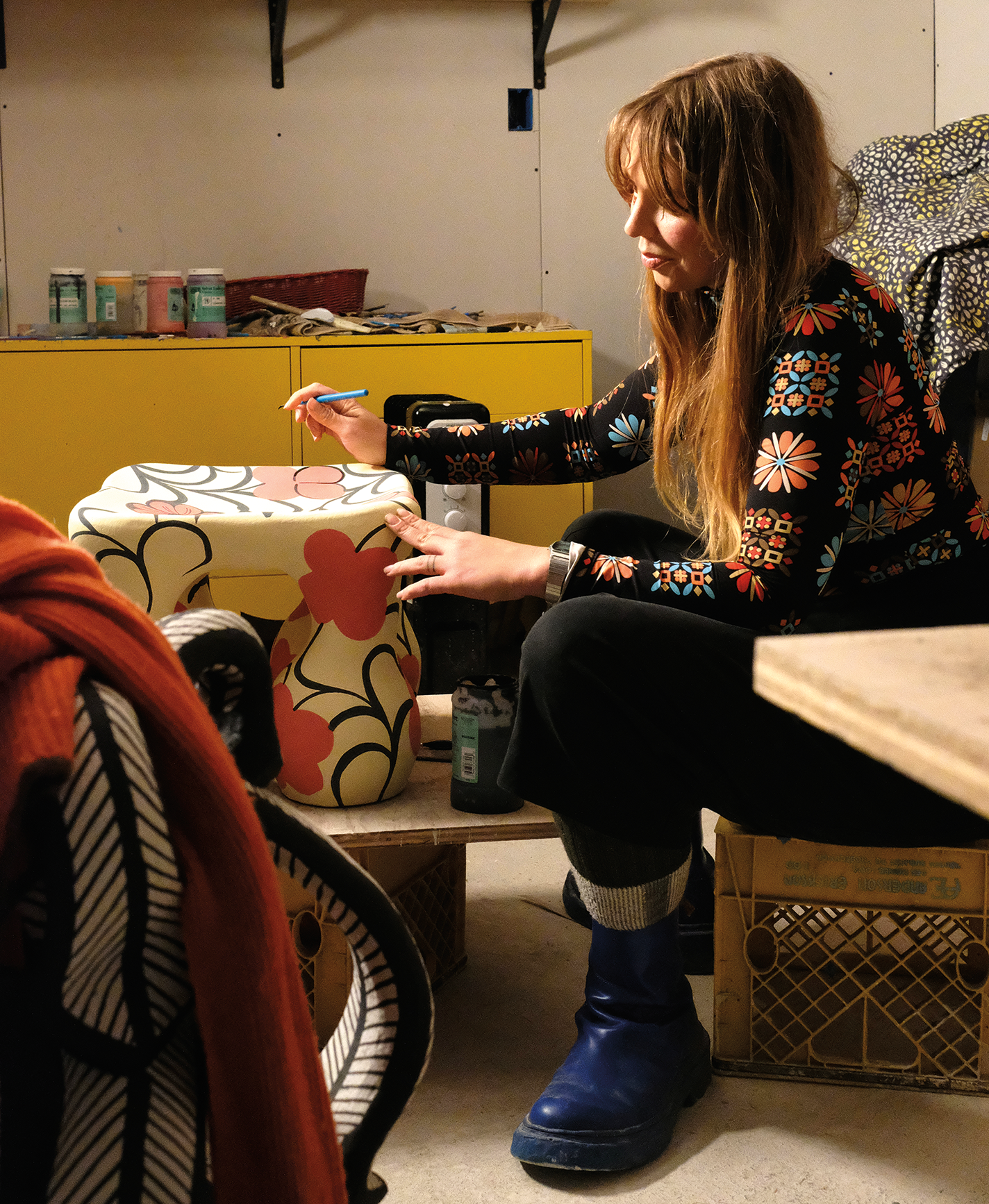
Ariana Heinzman in her studio.
-
 Photo by Ariana Heinzman
Photo by Ariana HeinzmanHeinzman’s stoneware Banana Split Plant, 29 x 12 x 13 in.
-
 Photo by Ariana Heinzman
Photo by Ariana HeinzmanBust in Red Dahlia is a cartoonish, bold take on the classic bust form.
“I like pushing things to the limit—that’s most exciting to me.”
— Sasha Koozel Reibstein
Sasha Koozel Reibstein
With degrees in painting, ceramics, and sculpture, Sasha Koozel Reibstein has the training to make just about anything, but it‘s her interest in chemistry that makes her art so unique. Using substances such as silicon carbide, tin oxide, and molten metals, she creates otherworldly sculptures with unexpected textural contrasts: rough, rocklike bodies in organic shapes spawning sensuous globules, horns, and petals in shimmering gold, porcelain, or mother-of-pearl. Each piece contains a yin and yang of darkness and brightness, beauty and grotesqueness. “I really think of myself as an alchemist,” she says. “I like pushing things to the limit—that’s most exciting to me.”
Reibstein began tinkering with chemistry in the early aughts while earning her MFA in sculpture at the Massachusetts College of Art. She learned, for example, how silicon carbide, when applied to a clay object before firing it, produces explosions in the kiln that result in a pockmarked texture similar to volcanic rock. Over time, the use of this lava glaze became one of her signatures, as did the use of molten precious metals to paint certain parts of her sculptures, making them appear to be made of solid gold or platinum.
Thematically, Reibstein’s mind goes to places as big as the cosmos. Aesthetically, she’s influenced by a much smaller locale: the streets of Philadelphia, where she grew up. “The city is so gritty, with old buildings and graffitied walls and just a lot of texture,” says the artist, who now lives in California, where she heads the ceramics program at Palomar College. “That has followed me and informed my aesthetic.”
Reibstein’s process is labor intensive, almost mind-bogglingly so. One of her recent works, Burst and Bloom, has a central form that “is not necessarily identifiable,” featuring a gray surface speckled with shades of pink, yellow, white, and orange, resulting from different colored glazes that she mixed by hand and dry brushed on the body before the lava glaze. The whole thing sits on a bed of grog (crushed pottery), which was colored to match. Attached to the sculpture are several creatures that look like sea urchins, made of porcelain, with each spiky bit sculpted individually. The end result involved kiln firings at specifically measured times and temperatures.
Most of Reibstein’s work is done at her spacious home studio in San Diego, but the former five-car garage she works from was not big enough to hold The End is Near the Beginning, a 1,300-pound work that was made on campus at California State University, Long Beach. “Every piece has to have some level of obsessiveness,” she says.
Paola Singer, a freelance writer in New York, is a frequent contributor to American Craft.
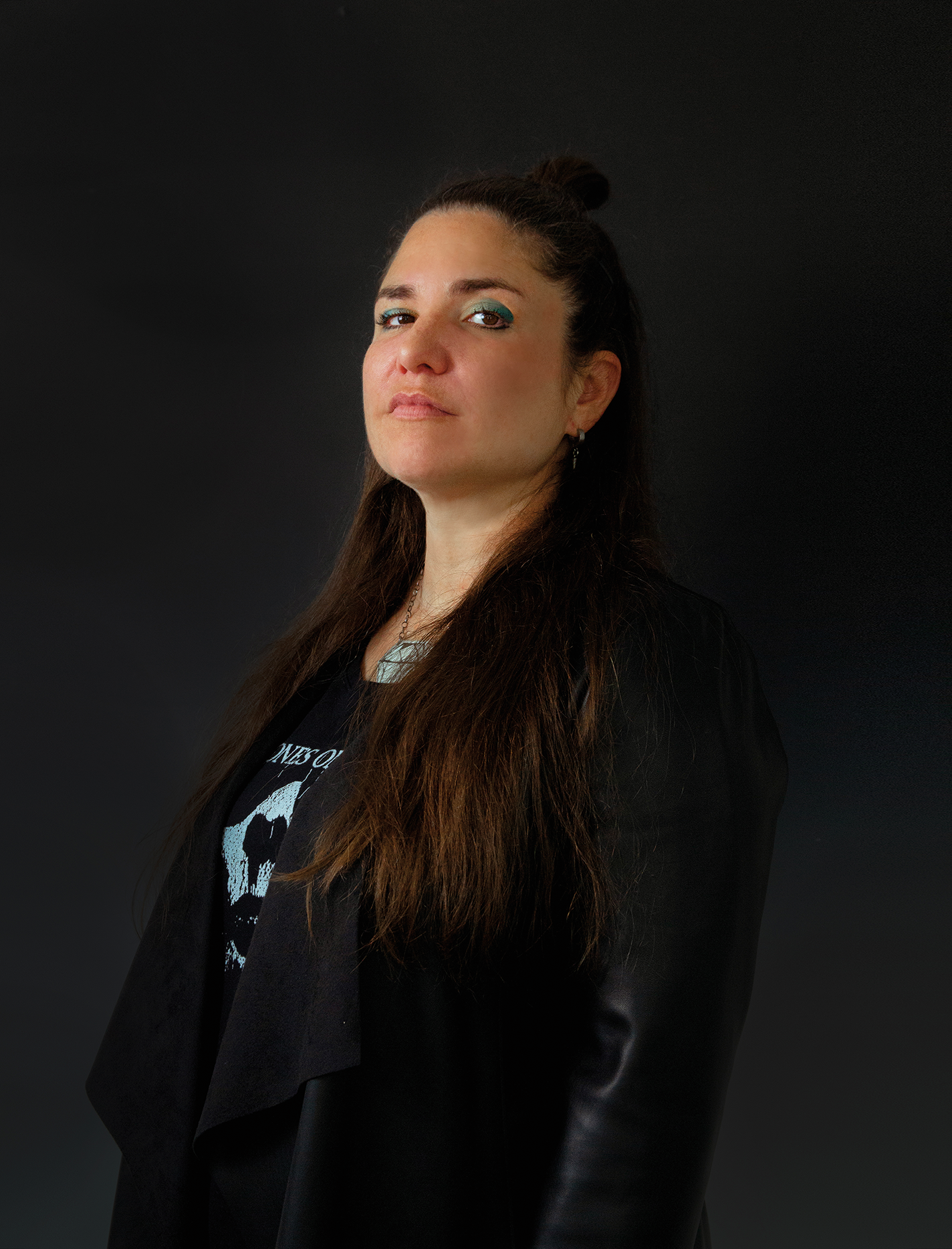
Sasha Koozel Reibstein
-
 Photo by Jones von Jonestein
Photo by Jones von JonesteinBurst and Bloom, 2022, 15 x 13 x 10 in. includes a lava glaze and pink porcelain pieces shaped like sea urchins.
-
 Photo by Amanda Quinlan
Photo by Amanda QuinlanSasha Koozel Reibstein’s massive and imaginative ceramic sculpture The End is Near the Beginning, 2023, 66 x 45 x 42 in.
Before you go!
We believe that making creates a meaningful world, and we hope you do, too. Deeply researched and impactful journalism on the craft community is in short supply. At the same time, being featured in a national publication can have a major effect on a maker’s or artist’s livelihood, particularly those who are just starting in their career. You can help support our mission and the work of makers around the country by becoming a member or by making a gift today.
Thank you!
American Craft Editors

